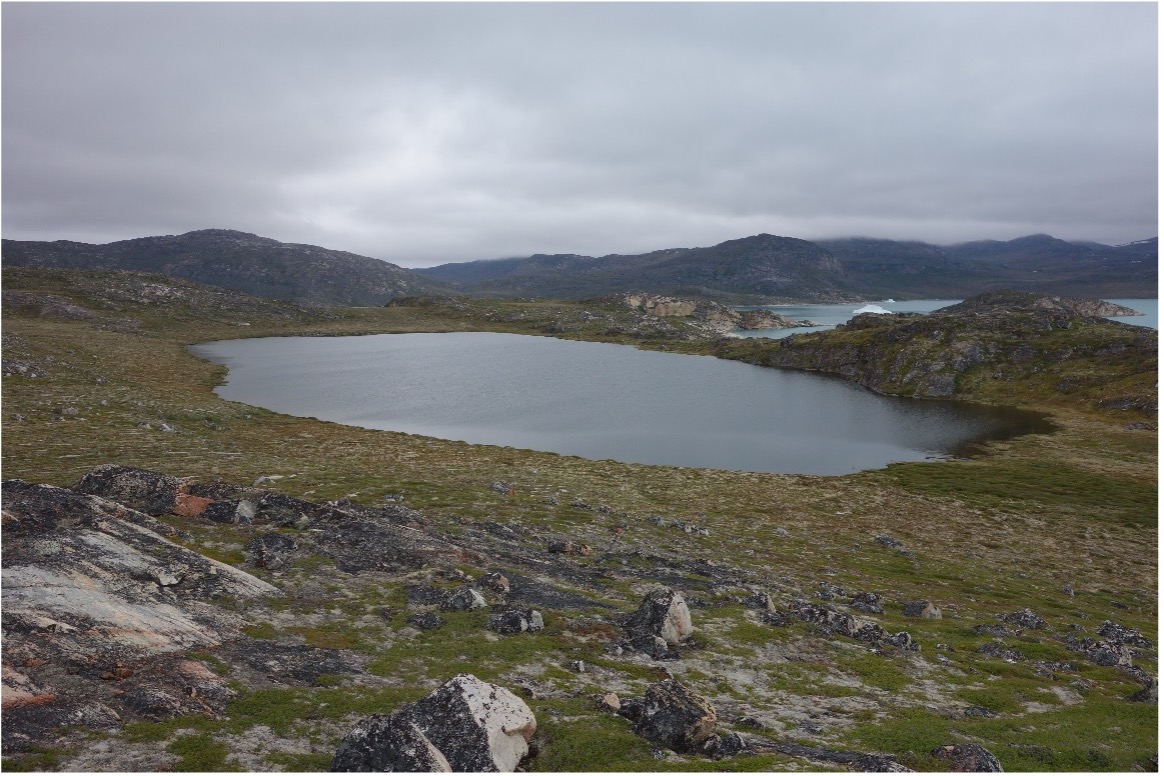Geography Available Research Project
Terrestrial response to freshwater forcing around Greenland
Is there evidence for the 8.2 ka BP event in coastal lake sediments in Greenland?
The outbursts of glacial lakes Agassiz and Ojibway around 8200 years ago provide a perfect analogue to study the response of the AMOC to freshwater forcing and its potential impacts on the North Atlantic and global climate in the near future. The freshwater input from glacial lakes 8200 years ago, has been hypothesized to have halted the production of deepwater formation which produced the recorded regional and even global cooling [Rohling, and Pälike 2005]. However, there is sparse and conflicting evidence for a weakening of the AMOC and its impact on Greenland temperatures. This project aims to investigate the terrestrial climatic consequences of the 8.2 ka BP event using terrestrial lake sediment archives from west and southeast Greenland. Existing lake cores in the Geography Department archive from west and southeast Greenland will be used to establish pan ice sheet and terrestrial system response to regional cooling (Long et al., 2006; Woodroffe et al., 2014). Multi proxy laboratory analysis on individual sediment cores will include sediment properties, XRF and diatom analyses in order to reconstruct changing lake conditions (temperature and salinity) through time, to elucidate the impact of the 8.2 ka BP event on coastal climate around Greenland.
Project Inquiries & Applications
For more information about this project or to discuss your research ideas contact lead supervisor(s): Dr Sarah Woodroffe and Dr Paola Moffa-Sanchez

Key references:
Long, A.J., Roberts, D.H. & Dawson, S. (2006). Early Holocene history of the west Greenland Ice Sheet and the GH-8.2 event. Quaternary Science Reviews 25, 904-922.
Rohling, and Pälike (2005). Centennial-scale climate cooling with a sudden cold event around 8,200 years ago, Nature, 434(7036), 975-979.
Woodroffe, S.A., Long, A.J., Lecavalier, B. S., Milne, G.A. & Bryant, C.L. (2014). Using relative sea-level data to constrain the deglacial and Holocene history of southern Greenland. Quaternary Science Reviews 92: 345-356.
Available Research Projects
See all of the currently available research projects that are recruiting students.
Research Masters
Our Research Masters provides an opportunity to develop your research expertise and advanced skills. Pursue your own top or collaborate on a project designed by a supervisor in our world-leading research environment.
Contact Us
Founded in 1928, the Department of Geography at Durham University is one of the leading centres of geographical research and education in the world.
Department of Geography
Postgraduate Study
Durham University
Lower Mountjoy
South Road, Durham
DH1 3LE, UK
Tel: +44 (0)191 33418000


/prod01/prodbucket01/media/durham-university/departments-/geography/Matt_Couchmann-3872X1296.JPG)



